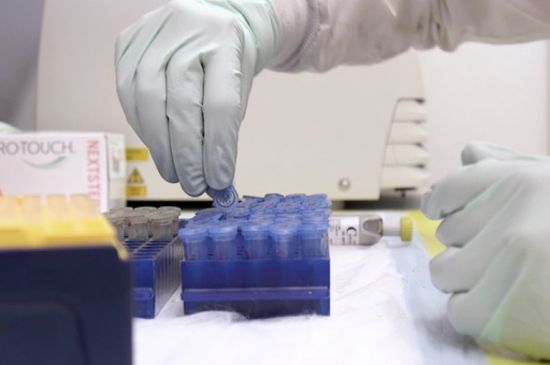NEWS RELEASE
September 09, 2022
Potential HIV Vaccine Component Proves Effective in Primate Study

DURHAM, N.C. – To block infection from HIV, a successful vaccine will require a combination of ingredients, including at least three antibody targets and a substance that boosts immune responses.
In a step toward achieving that goal, one potential vaccine component has led to strong protection in primates by eliciting an antibody that binds to part of the virus’s outer envelope, reports a team led by researchers at the Duke Human Vaccine Institute (DHVI).
“This is significant progress toward a viable HIV vaccine,” said Barton Haynes , M.D., director of the DHVI and senior author of the study appearing online this week in the journal Science Translational Medicine . “While we know this will be a many-step process, each step is an advancement toward our goal.”
Haynes and colleagues, including first author Kevin Saunders , Ph.D., director of research at at DHVI, isolated neutralizing antibodies that arose from a person living with HIV.
These antibodies bind to a known site on the virus that is conserved among many HIV strains. Exploiting this interaction, the researchers built an immunogen that stimulates the protective neutralizing antibodies against the immunizing strain.
Along with the immunogen, the researchers tested potential adjuvants, which boost the immune response. The team found that the best adjuvant ingredient was a Toll-like receptor called TLR7/8 that is a common ingredient in other vaccines.
Together, the protein and adjuvant in the vaccine provided protection from infection.
“Our study supports the notion that relatively high levels of multiple broadly neutralizing antibody types will need to be induced by vaccination to prevent HIV infection,” Haynes said. ”Our study also suggests that the use of the TLR7/8 agonist was key for inducing high concentrations of neutralizing antibodies and potently activating the immune system.”
In addition to Haynes and Saunders, study authors include Robert J. Edwards, Kedamawit Tilahun, Kartik Manne, Xiaozhi Lu, Derek W. Cain, Kevin Wiehe, Wilton B. Williams, Katayoun Mansouri, Giovanna E. Hernandez, Laura Sutherland, Richard Scearce, Robert Parks, Maggie Barr, Todd DeMarco, Chloe M. Eater, Amanda Eaton, Georgeanna Morton, Benjamin Mildenberg, Yunfei Wang, R. Wes Rountree, Mark A. Tomai, Christopher B. Fox, M. Anthony Moody, S. Munir Alam, Sampa Santra, Mark G. Lewis, Thomas N. Denny, George M. Shaw, David C. Montefiori, and Priyamvada Acharya.
The study received funding from the National Institutes of Health Division of AIDS (UM1AI100645, UM1AI144371, P01 AI131251) and the Center for HIV/AIDS Vaccine Immunology-Immunogen Discovery.
The adjuvant used in this study, 3M-052-Alum, was developed by 3M and formulated by the Access to Advanced Health Institute.
Media Contact:
Sarah Avery
Director
919-724-5343
sarah.avery@duke.edu
Source: https://corporate.dukehealth.org/news/potential-hiv-vaccine-component-proves-effective-primate-study
"Reproduced with permission - "Duke Health"
Duke Health
For more HIV and AIDS News visit...
Positively Positive - Living with HIV/AIDS:
HIV/AIDS News
|